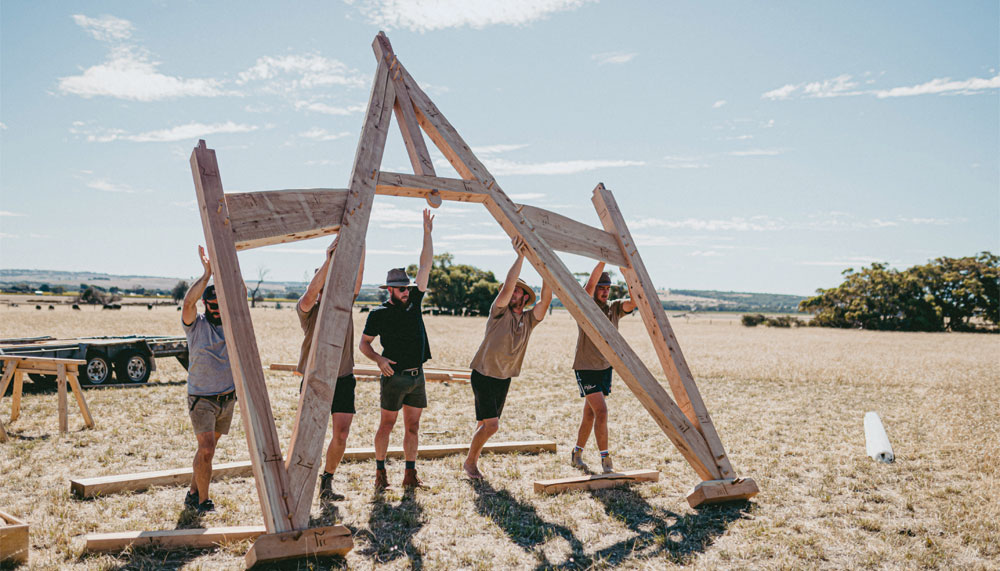From milling their own timbers to using ancient carpentry techniques, a South Australian building company is establishing a reputation for high-quality craftsmanship.
Story Ken Eastwood Photos Evan Bailey
Joy radiates out from the tradies like the large cypress beams they’re working on. The hard-won but simple pleasure for the men from 35 South Building Co. comes from working with a close-knit team on timbers from living trees through to finished building projects. Some of these major building projects are completed with no glues, nails or steel, just using wooden pegs and traditional joinery techniques dating back centuries.
The company, based on the Fleurieu Peninsula, SA, is only two years old, but is already employing nine people full-time, with half a dozen projects on the go. “We are one of very few builders that own and operate their own portable sawmill, trained in and practising traditional timber framing and logging techniques,” says Ben ‘Sticks’ Kernahan, one of the company’s three directors. “We’re getting stuck in and enjoying pretty rapid growth.”
Ben started the company with brother-in-law Sam Foutoulis and mate Tom Shaw, who were all in their late 20s. A typical 60-hour week for each of them might involve a couple of days cutting down trees or milling timbers with their portable Lucas Mill, then working on multiple building projects, most of which are residential housing. “At the moment I’ve been just project managing, up in the office, keeping all the jobs moving,” Sam says. “But I’m thankfully not in the office for too long – I try to get at least four hours a day on the tools, or it’s even better when I can get on the mill for a few days. During your carpentry apprenticeship you’re just seeing dressed timber the whole time, but when you see a tree with all the knots and everything in it, and you extract useable timbers out of it, it’s pretty cool.”
One of their current jobs is building a playground pergola for the Mount Compass Area School, using cypress timber milled from 10km up the road on one of the student’s family farms.
This story excerpt is from Issue #138
Outback Magazine: August/September 2021










